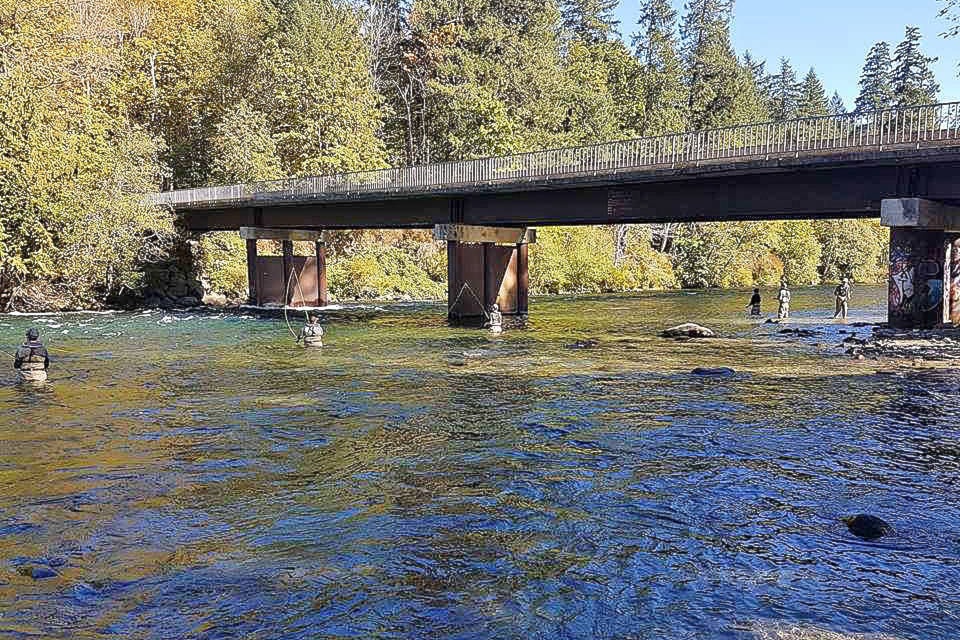Pink salmon returns to the Campbell-Quinsam River system are five times what they were last year, about 550,000.
That number is from a Department of Fisheries and Oceans Sept. 27 report which it called ‘preliminary’.
A week earlier, Edward Walls, Watershed Enhancement Manager for the Department of Fisheries and Oceans, Quinsam River Hatchery, said this year’s run of pink salmon could be more than four times that of last year.
He said the total run of pink salmon was 450,000 plus. And “they are still coming.”
Last year 99,000 pinks returned to the Campbell/Quinsam sytem. The return in 2017 was 111,000.
With such a large return this year it means the hatchery can easily provide the Puntledge River, Fanny Bay, Nile Creek, and Nanaimo River with eggs for their pink salmon programs.
Coho salmon are also trickling into the system, he said.
The 2017 return of 3,300 was less than half of what was expected. But 2,000 jack coho (immature males) also returned to the system in 2017. That kind of jack return can mean a healthier run in the following year.
“Sometimes it seems to work like that, if you get a strong run of jacks it kind of indicates they did well going into the ocean and in the following year you might get the correspondingly strong adult return,” said Walls.
In 2018 that proved correct, with 6,200 adults and 3,800 jacks returning. Fingers are crossed as to what might happen this year.
As for the iconic Campbell River Chinook, Walls said early results look “maybe” for a “strong return.”
While no chinook were counted in the Quinsam as of last week, about 2,500 were counted in the Campbell in mid-September.
The 2017 return of Chinook to the Quinsam was 9,500, with another 600 spawning in the Campbell. In 2018 the return was 6,500 chinooks, 660 of which spawned in what gravel is left in the river.
Meanwhile, the Tyee Club of British Columbia endured one of its worst years ever, with only 13 of 30-pounds and over registered chinook. The club season ran from July 15 to Sept. 15 and was adversely affected by fishing closures.
The largest fish of the year was 36 pounds.
The current ‘show’ on the Quinsam/Campbell system is the opening for coho retention in the river. As of Oct. 1 angler are allowed four coho per day, only two of which may be greater than 35 cm and those two must be hatchery marked, meaning no adipose fin.
RELATED: A whirlwind of fishing this week in Campbell River
Like us on Facebook and follow us on Twitter
NOTE: This story has been updated as of Oct. 3 to reflect current numbers.
